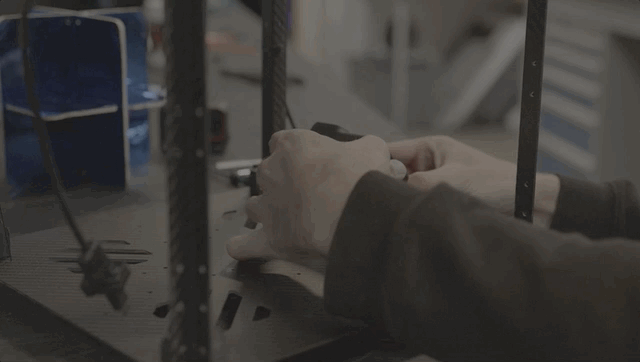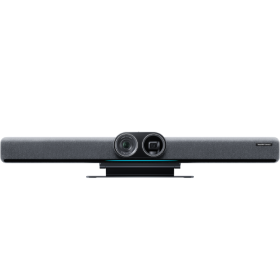Insta360 Ace Pro 2, a smoothie, Taskmaster's Greg Davies' statue and MrBeast's 100 Million subscriber YouTube Play button. What do they all have in common? They've all been sent into space.
Launching from over 15 sites in the UK, SentIntoSpace blasted Insta360's brand-new 8K AI-powered action camera, Insta360 Ace Pro 2, into the upper stratosphere. At 38km above the Earth's surface, it offered an incredible look at planet Earth from above, and the results were nothing short of incredible.

We sat down with Sent Into Space to discuss how they made it possible, the view from the stratosphere and how to light a firework in space...
The Mission
What is Sent Into Space, and what is its main mission?
Sent Into Space is the world's leading provider of commercial Near Space launches. Since 2011, we have conducted over 1000 flights to the upper stratosphere, incorporating cutting-edge aerospace engineering with video production and marketing expertise to create incredible campaigns.
Our work includes global marketing stunts, space cinematography for documentary and cinema, scientific research, aerospace research and development, educational projects and even ash scattering memorial services.
We capture attention through inspiring content around space, spark passions for space and inspire young people to pursue education and careers in STEM.
When and how did Send Into Space start?
Chris Rose and Alex Baker met while studying for their PhDs in Mechanical Engineering at the University of Sheffield. One day, an idle conversation in the pub sparked the idea of launching a balloon into space with a camera onboard to shoot an incredible panorama.
Over six months, they researched the history of radiosondes, looking at ways to track a helium balloon into space and weather prediction software to model its path up and back down again, experimenting with various methods of insulating the camera that would capture video on their maiden voyage. On the 17th of December 2010, they launched their very first flight from the back garden of Chris' family home.
What's been your favorite, or craziest, thing you've sent into space so far?
We've done all sorts of wild stunts...but our favourite launches are all about filming the Earth itself. Our launch from the Grand Canyon earlier this year, which used Insta360 X3, was an incredible experience and the view is just stunning.
What has been the most challenging thing to send?
Several years ago now, we attempted to see if we could ignite a firework display in space. The project was plagued by misfortune: our first three flights had to be terminated early due to unexpected bad weather, meaning we never even got the spacecraft to the right altitude to attempt the ignition. Even after that, we had a whole host of technical faults before deciding to put the project on hold until we'd all recovered from the experience. Clearly, it's still too soon to try again!
The Launch
Where do you launch the spacecraft from?
We have over 15 sites across the UK that are available with less than a week's notice, allowing us to select sites based on weather and flight path predictions. We've also launched in hundreds of countries, and we have strong working relationships with the US Federal Aviation Authority and the equivalent bodies in most European countries.
How do you keep your flights environmentally friendly?
We use the natural buoyancy of hydrogen, captured in biodegradable latex balloons, to lift our spacecraft to altitude. This means we're not burning any fuel, and the hydrogen is renewable and doesn't have any greenhouse gas effect. Where possible, our components are manufactured in-house using novel, low-impact manufacturing methods like 3D printing and carbon fibre moulding, which reduce waste and shipping costs.

How exactly does the spacecraft work?
Our spacecraft are designed to be as lightweight and streamlined as possible while supporting all our essential technology. We have a range of different craft profiles to suit different applications, but all are equipped with our flight computer module, satellite and radio antenna for tracking and remote control, and almost always some kind of camera system. Then, we have a modular system of moulded carbon fibre, 3D-printed thermoplastics and insulative foam that allows us to easily integrate whatever components we need for a particular project: high-end cameras, electronic and mechanical parts, client products and components, and so on.

How long does it take to build the spacecraft?
For some of our most complex projects, we've put hundreds of hours into designing, manufacturing and integrating specific components into our craft, but we have also turned flights around in under 24 hours when necessary.
How extreme is the environment? What do you need to consider before sending the camera, or anything, into space?
At the peak of our flights, we're in a near-total vacuum, above 99.5% of the gas that makes up the Earth's atmosphere. The ambient temperature is around -65°C (-85ºF), which means we have to insulate batteries which rely on a chemical reaction happening at certain temperatures and speeds.
At the same time, the lack of atmosphere means that electronics which generate heat can't dissipate this through convection, so cameras which use fans for cooling have to be retrofitted with other heat dissipation methods.
The final consideration is lighting and exposure settings. Light from the sun is scattered as it passes through the atmosphere (this scattering is why the sky is blue instead of black). Once we're above the atmosphere, there's no diffusion of that light, which means the sun appears almost 60% brighter.
What is the average travel time of the spacecraft from launch to retrieval?
By default, the flight lasts for around two and a half hours. However, we can terminate the flight early if we identify an issue, and we can also plan longer flight durations if a project requires it.
What's the furthest from the launch site a spacecraft has landed?
Our longest flight travelled over 300 miles horizontally. We launched from the west coast of Ireland due to high stratospheric wind speeds and landed on the west coast of England.
Did you have to do anything to prep the cameras before the launch?
In terms of Insta360 cameras, there's little we have to do to prep before launch, apart from making sure the spec settings are pre-determined and correct! We often face issues with overheating with cameras that have built-in fan systems for cooling, as there is physically no air present in space for the camera to convect heat away. However, as the Insta360 cameras do not have this element built in, they are actually one of our best-performing cameras, often capturing the full 2.5-hour launch to space and landing with no fault.
How did you mount the cameras onto the spacecraft and keep them secure?
In order to mount the cameras, we first have to build a custom carbon fibre space craft, with bespoke 3D printed fixings that allow us to utilise Insta360's mounting accessories to position the cameras in the perfect place.

The Return
How do you predict and track the flight path?
We take weather data from over 100,000 sources worldwide to build a sophisticated wind simulation model. By controlling the ascent speed, burst altitude and descent speed of our craft, we can predict and adjust the flight path and landing zone to within a few hundred metres at the point of launch. This allows us to plan flights at safe launch locations and times to avoid restricted airspace and land in rural locations where they will cause minimal disruption to the general public.
How did you find and recover the camera?
Our spacecraft was equipped with two separate tracking systems, one communicating via satellite, the other broadcasting over encrypted radio. This let us monitor the position of the craft in real-time, combining this data with our advance flight path modelling system to be in position underneath the craft just minutes after it touched down.
Was Insta360 Ace Pro 2 able to capture something other cameras haven't been able to? If yes, what features of the camera made this possible?
I wouldn't say Insta360 Ace Pro 2 captured anything different to our other cameras in terms of subject matter. However, the spec capability of the camera, the super wide FOV and the fact that it is extremely lightweight with a small form factor, makes it the dream camera for us when considering weight and size for launching to space.

Were you impressed with the final footage?
We were blown away with the capability of Insta360 Ace Pro 2 and were all really excited to see the final footage, which definitely didn't disappoint. The image quality, sharpness, resolution, high frames and wide FOV all make for a fantastic shot of the Earth from space.
Were there any particular challenges you faced during the launch?
As we've conducted over 1000 launches now, this, when all said and done, was a relatively straightforward launch. I'd say the biggest challenge is mounting the cameras in the perfect way so that we capture everything in the best possible light. Insta360 Ace Pro 2 is completely seamless to use, and having the Insta360 app connection ability to the camera really helps for us to externally control and tweak settings where needed.
This isn't the first time you've sent Insta360 cameras into space. In your opinion, which Insta360 camera caught the best footage?
Personally, I love sending the Insta360 X4 to space. The capabilities it opens up in post-production for us to reframe into traditional 4K aspect ratios is incredible and we can get really creative with different movements when editing.
Ready to capture out-of-this-world shots? Pick up Insta360 Ace Pro 2 today. For more crazy stunts and to see what Sent Into Space sends next, check them out on YouTube and Instagram.
Keen to keep up to date on Insta360 stories? Keep an eye on our blog and sign up for our mailing list.

































